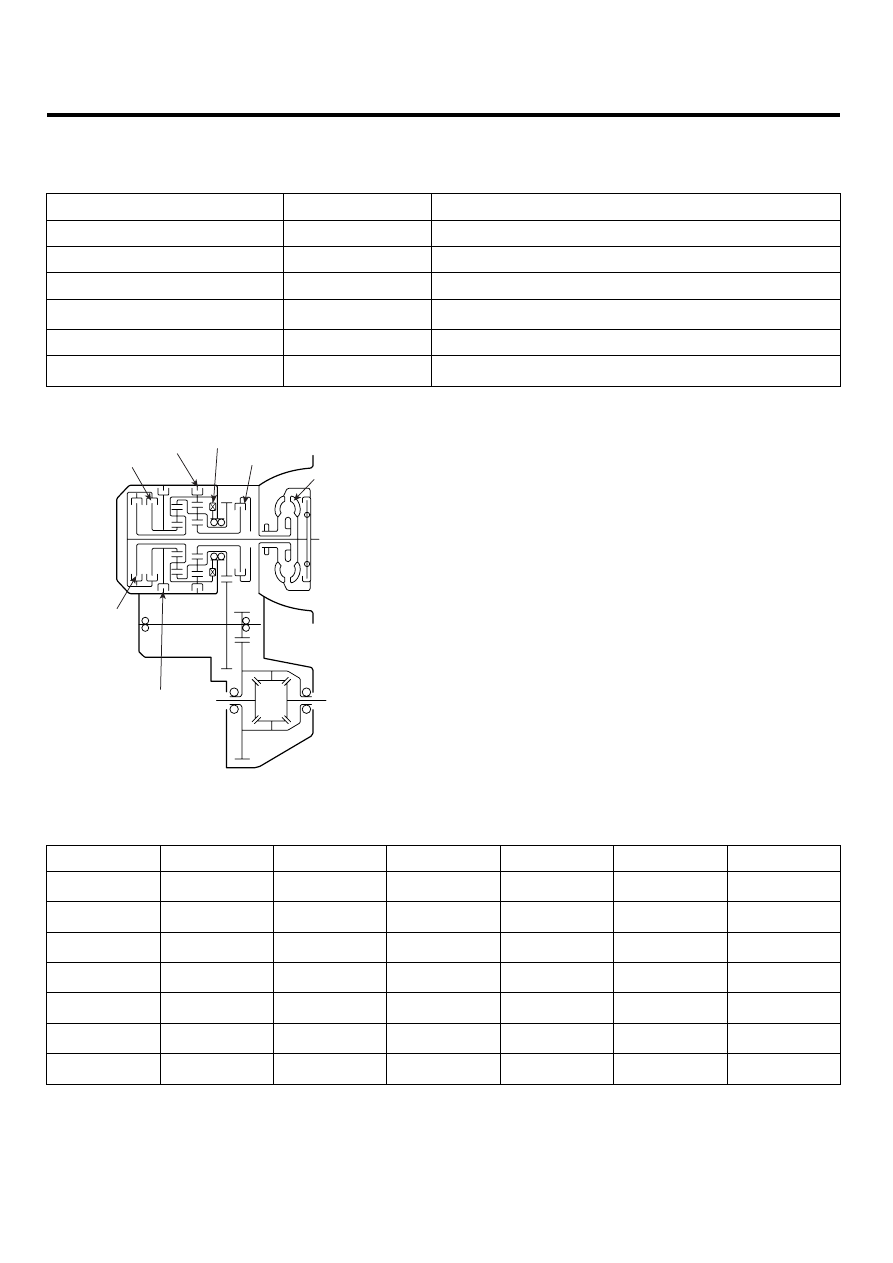Hyundai Santa Fe (2006 year). Manual - part 14

AT -8
AUTOMATIC TRANSAXLE (F4A51)
MECHANICAL SYSTEM
OPERATION COMPONENTS AND FUNCTION
Operating Element
Symbol
Function
Under drive clutch
UD
Connect input shaft and under drive sun gear
Reverse clutch
REV
Connect input shaft and reverse sun gear
Overdrive clutch
OD
Connect input shaft and over drive carrier
Low&Reverse brake
LR
Hold LR annulus gear and OD carrier
Second brake
2ND
Hold reverse sun gear
One way clutch
OWC
Restrict the rotating direction of low & reverse annulus gear
Reverse
clutch
Overdrive
clutch
Second
brake
Low&Reverse
brake
Underdrive
clutch
OWC
Torque
converter
EKRF002A
OPERATING ELEMENTS
UD/C
OD/C
REV/C
2ND/B
LR/B
OWC
P
●
R
●
●
N
●
D1
●
●
○
D2
●
●
D3
●
●
D4
●
●
1) ○ : OWC is operated when shifts from 1st gear to 2nd
gear.
2) L & R brake is released in 1st gear when the vehicle
speed is more than 5KPH approximately.